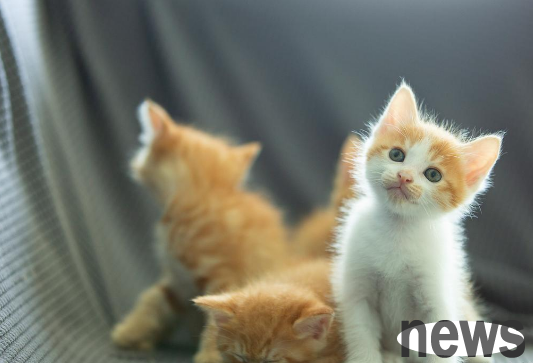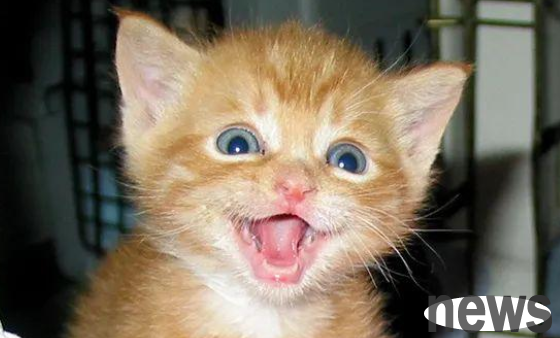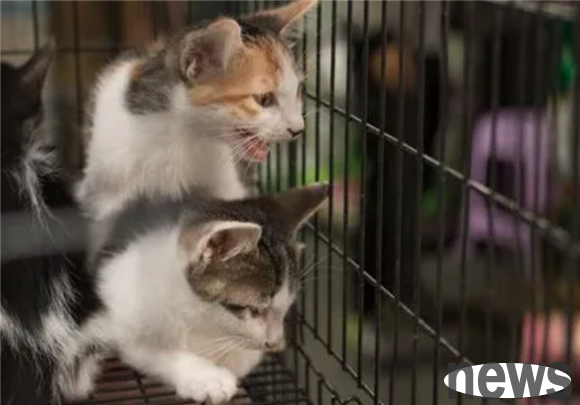Epidemiology and treatment of cat thrombosis, a must-see for raising cats!
Epidemiology and treatment of cat thrombosis, a must-see for raising cats! In order to heal, platelets will attach and agglomerate in the damaged area, causing narrowing of the channel, thereby causing blood blockage in the blood vessels. Blood vessel damage may be some chronic reasons, such as endocrine and metabolism disorders, sudden and violent fright, or some inflammation. Some postoperative complications can also cause thrombosis, and blood clots often occur in cats' heart diseases, which requires attention during daily feeding and medical care.

1. Cause
Cat thrombosis occurs due to arterial thrombosis, usually formed in the left atrium or left ventricle, and then travels with the blood, embolizing it in smaller arteries, hindering the blood oxygen supply to downstream tissues. More than 90% of the embolism occurs in the tributary part of the aorta, where the artery branches into the two hind legs. The thrombus of the embolism is like a saddle, so it is also called a saddle-shaped thrombus. In addition, blood clots may also embolize arteries leading to the forelimbs, brain, gastrointestinal tract, lung or kidney, and coronary arteries.
Trombosis in cats usually suggests hypertrophic cardiomyopathy, and cat thrombosis can also be secondary to tumor diseases (usually chest and abdominal tumors) and hyperthyroidism. Factors that cause thrombosis include local endocardial injury, increased blood viscosity, left atrium dilation, etc.
2. Epidemiology
The incidence of arterial thromboembolic disease in cats is 0.6-0.7%, and about two-thirds of the affected cats are male cats, and the incidence of hypertrophic cardiomyopathy in Tianwei male cats is relatively high. Abyssinian cats are prone to heart disease and are also prone to this disease. Any age-transfer can occur, and the incidence rate of middle-aged cats is higher. No geographical distribution differences were found in the disease.
III. Clinical symptoms and diagnosis of
Typical clinical symptoms of saddle thrombosis include: quadratic paralysis of both hindlimbs, disappearance of femoral artery pulsation in the hindlimbs, cooling of the distal limbs and foot pads, and cyanosis of the foot pads and nail beds (blue purple). After thrombosis 10-12 hours, the tibia and gastrocnemius muscles become stiff due to muscle ischemia, which will relieve after 24-72 hours. An acute attack cat can pull back the hind legs by flexing and stretching its hips, but cannot flex the ankle joint. Symptoms on one side are always more serious than those on the other side. Most cats will experience dehydration and body temperature reduction. If it is incomplete embolization, it may only show intermittent claudication, but more severe embolization will often occur later.
Teen cats generally show severe pain (secondary to muscle necrosis caused by blood perfusion), asthma (latecomered by pain), body temperature reduction (secondary to shock), elevated blood sugar (induced by stress), elevated creatine myozyme (secondary to damage caused by poor blood perfusion), and azotemia (elevated kidney index, secondary to poor blood perfusion). The heart auscultation may hear galloping horse rhythm, heart murmur or/and heart rate.
Unilateral brachial artery thrombosis (usually occurring on the right forelimb) can cause paralysis of the single limb. Embolisms occurring in other parts may cause corresponding symptoms due to ischemia and necrosis of the related organs, such as bloody stool caused by mesenteric artery embolization, and renal infarction caused by azotemia.
Basic diagnosis can be made based on clinical symptoms, combined with chest X-rays, ECG, echocardiography, biochemical examinations and urine analysis. After the cat's thrombosis occurs, creatine phosphate kinase increases quickly, and the urea nitrogen/creatinine ratio, serum alanine aminotransferase ALT, and glutamate aminotransferase AST increase after 12 hours of thrombosis and reach peak after 36 hours. Hyperglycemia, hypocalcemia, cleavage, porous leukocytes, and abnormal coagulation may occur. As thrombosis affects the reperfusion of downstream skeletal muscle, acute hyperkalemia may occur. With the use of loss of appetite and diuretics, hypokalemia may occur. Echocardiography can detect blood clots in the heart and blood vessels. Idiopathic echo enhancement ("smoky") in the left atrium and left ventricle is associated with blood flow block, which is a precursor to the formation of a thrombus. If conditions permit, scintillation, magnetic resonance, CT and angiography can also be used to make the diagnosis.

IV. Treatment of
to control concurrent congestive heart failure and severe arrhythmia: including the administration of furosemide, oxygen, ACEI, nutritional supplements, etc.
1. Supportive therapy:
Correct dehydration, regulate acid/base/electrolyte balance, insulation, and nutrition. For anorexia cats, nasal feeding tubes can be inserted to provide nutrition. It is also necessary to prevent the cat from licking and biting the distal end of the necrotic limbs from excessively. This kind of self-harm behavior is more common during the recovery period. Use of intravenous indwelling needles in affected limbs where embolism occurs should be avoided.
2. Control pain:
Within 24 hours of embolization, the pain was severe, and then the pain dropped rapidly. Aspirin (25mg/kg, once every 2 days) is both an analgesic agent and can inhibit platelet aggregation. The side effects are anorexia and vomiting. Fentanyl painkiller or hydromorphone (0.05-0.1 mg/kg) can be used to control moderate to severe pain, while Butorphinol (0.2-0.4 mg/kg) can control mild to moderate pain. The latter two drugs can be administered subcutaneously, intramuscularly or intravenously, once every 6-8 hours, and once every 4 hours if necessary.
No matter which cause this disease, it is accompanied by heart failure and respiratory failure in most cases. Therefore, when you first diagnose, you should immediately strengthen your cardiac diuresis, and antibiotics should be given for treatment due to bacterial endocarditis.
3. Administer anticoagulant (500-800 units/piece, intravenous injection. Afterwards, according to the coagulation time, add subcutaneous injection or intravenous injection every 3-8 hours) and thrombolytic thrombogenic (urokinase, 3000-6000U/piece, intravenous injection). While dealing with internal medicine, perform thrombectomy surgery as soon as possible. Because the surgery is mostly performed under the guidance of contrast, the anesthesia should be maintained as shallow as possible (for example, 0.1% of cats have about a small amount of drops, and muscle relaxant succinylcholine chloride 0.2 mg/kg intravenous injection).
4. For the saddle-shaped thrombus at the bifurcation of the external iliac artery, open the abdominal cavity along the midline of the abdomen, carefully peel the artery, clamp the embolization area with hemostasis forceps, cut a small opening at the proximal end, and squeeze the thrombus out.. Sometimes blood clots will form in the peripheral arteries away from the heart. The formed blood clots are thin and long, so be careful not to break when removed. If necessary, insert a catheter into the artery of the thigh and extend it into the vicinity of the thrombus, and then use positive pressure to rush out the thrombus. Before the vessel is sutured, heparin and saline are injected into the left and right peripheral blood vessels. When sewing, sew the needle holes tightly.
5. Pay attention to maintaining body temperature after surgery, supplement nutrition, and provide continuous oxygen inhalation.















